|
Data Journalists often report visualizations or statistics of data as part of the stories they tell. However, this data often comes in formats that are hard to use. This project aims to build tools to help journalists extract data from documents so that it can be easily visualized and analyzed. |
Through findings from over 60 interviews and a national online survey with 978 with diverse groups of parents, we explored parents' ability to find learning opportunities, we identify differences in parents' use of online social networks in finding learning opportunities for their children across different socioeconomics. |
Visualization has an important role in science and technology. People rely on visualizations to better understand problems they have to solve. Information visualization has recently increased its domain, from being used for representations of business data, to more political and social uses via groups like visualizing.org and infosthetics.com. In parallel with this growth, we have seen the widespread acceptance of mobile technology by masses. Mobile phones, today, are being used for everything from email to ticketing and web browsing to watching videos. 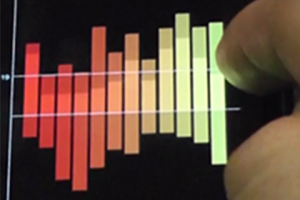 |
In this project, we have designed visualizations that show the recent history of a team's draft selections as well as each team's regular season and playoff history. Our goal is to provide an easy-to-browse and -understand interface for exploring the data and learning about teams' pasts. 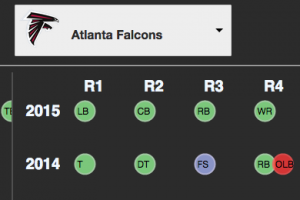 |
|
Our research examines the role that low-cost virtual reality technology could play in supporting learning in low-resource contexts. Specifically, we propose to study the potential of creating affordable virtual reality-based learning experiences for children in these contexts. There has been a rising penetration of low-cost mobile technologies and internet connectivity in under-resourced communities, and this motivates us to explore the feasibility of virtual reality as a medium to enhance learning experiences for low-resource contexts. |
The existence of pro-eating disorder (pro-ED) communities has challenged many social media platforms, such as Instagram. These communities promote the adoption and progression of eating disorders, which are known to have negative impacts on health. Instagram has reacted by banning searches on several pro-ED tags as well as issuing content advisories on others. In response, the pro-ED community has adopted non-standard lexical variations of these moderated tags to circumvent restrictions. This research investigates the impacts of Instagram banning tags on the community. |
Our project aims to utilize instrumented dog toys to collect data on dog play behaviors. The current project implementation is a food-safe silicone over-molded tennis ball with an embedded sensor package at its center. The sensors collect motion data (via an inertial measurement unit) and pressure data (via a barometer) as dogs play with the ball. |
Exploring experiences for a real-time companion device application to enhance live sports-watching experiences. The application facilitates active social engagement typically of sports and assists in understanding the dynamics of the match more efficiently. 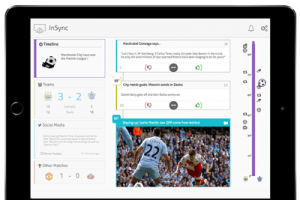 |
|
Visual analogies on intelligence tests |
Engineers are interested in solving some practical problem, such as capturing water vapor in arid regions. They intend to use biological analogs as a source of inspiration. Doing so, however, raises several problems. First, the biological literature is immense, and keyword-based search produces voluminous hits, but most of the retrieved documents are of no use. That is, there is a high recall but low precision. The second problem is that even when a document looks like it might be relevant, it is still burdensome for the engineer to make a determination. |
Augmented-reality is a technology that can revolutionize children's education and entertainment. In studies of adolescents and adults, it has been shown to have measurable benefits for advancing STEM education through situated 3D simulations, providing entertainment through whole-body interaction, and enhancing physical & cognitive rehabilitation through motivational engagement. We are interested in bringing such experiences into the hands of elementary-school children. In this project we are studying young children's ability to effectively use various types of handheld-AR interfaces. 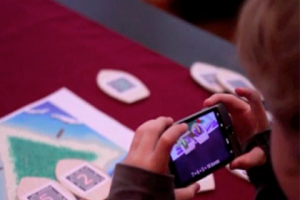 |
Interactive Device Promoting the Sharing of Emotions When People Resonate with Each Other in CinemasLab: Considering the fact that the in-person social interactions distinguishes movie theaters from other competitive distribution channels of films such as streaming services, our project aims at taking advantage of the co-presence of audience to create more social interactions through an interactive device within the unique physical space of movie theaters so as to deliver a more engaging and fulfilled social moviegoing experience. |
|
Improvisational storytelling involves one or more people interacting in real-time to create a story without advanced notice of topic or theme. Human improvisation occurs in an open-world that can be in any state and characters can perform any behaviors expressible through natural language. In this project, we strive toward the grand challenge of computational improvisational storytelling in open-world domains. The goal is to develop an intelligent agent that can sensibly co-create a story with one or more humans through natural language.  |
End-user interaction with machine learning based systems will result in new usability challenges for the fields of human computer interaction and machine learning. With machine learning systems becoming more and more prevalent, it is important that systems are properly designed in a user-centered manner. In order to address these challenges, the most relied upon usability inspection method-the heuristic evaluation-must be adapted for the unique end-user experiences that interactive machine learning presents. This project introduces ten heuristics for interactive machine learning. |
As event sequence data grow in prominence, sequential pattern mining algorithms have been widely adopted to discover interesting patterns in data. For instance, ecommerce websites use these algorithms large-scale clickstream data to understand the common paths taken by customers. In the healthcare domain, sequential pattern mining algorithms open the door to investigating the sheer volume of patients in a hospital. 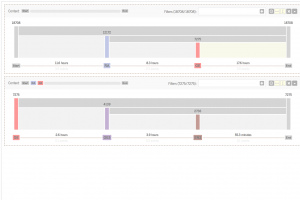 |


